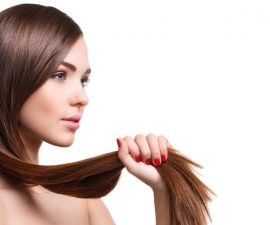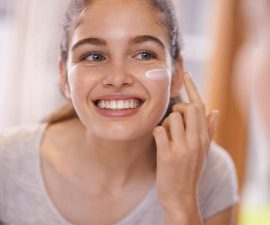Beauty products are formulated with several ingredients, that is obvious. Among them, there are surfactants, better known as SLS, SLES, SCS. Why are they there? Simply put, apart from lathering, they are responsible for making our bodies and hair clean. Okay, but is it safe to use them on a day-to-day basis?
What are SLS-s added to beauty products?
As mentioned earlier, SLS-s are surfactants added to almost every single washing product (i.g. soap, bubble bath, face cleanser, toothpaste, shampoo). Their task is to effectively remove dirt and impurities, both the lipophilic (fat-soluble) and hydrophilic (water-soluble). SLS-s emulsify these greasy layers that are created on the skin’s surface throughout a day (color cosmetics, sebum, oils).
SLS, SLES, SCS – what’s their mission?
Thanks to these surfactants, a washing product hasn’t got any problems with dissolving various impurities to later remove them from the hair and skin. The lather created by SLS-s facilitates spreading all the washing agents over a surface. On the flip side, there is no lathering substance that would be neutral for skin. Studies show that they have a negative impact on the epidermis which may lead to irritation and dryness, it may disturb the hydro-lipid barrier and change skin’s pH. The most common (because the cheapest) washing agent is SLS, that is Sodium Lauryl Sulfate. The evil incarnate.
SLS – why so dangerous?
SLS makes a common “housemate” living in the majority of cleansers, and this is the worst kind of neighbor that can exist. It couldn’t care less about your skin. It deprives skin of water, causes irritations and discomfort (e.g. the feeling of tight skin). When in contact with eyes, it immediately causes stinging and prickling.
The degree of irritation depends on the concentration of SLS used in a beauty product. It should be also realized that throughout a day you can expose the body not to just one but a couple of products containing the surfactant. For that reason, make sure that you don’t buy many cleansers formulated with SLS-s. It’s also worth remembering that SLS has many names, some of them include:
- Lauryl sulfate sodium salt
- Lauryl sodium sulfate
- Sodium salt
- Sodium dodecyl sulfate
- Monododecyl ester
Difference between SLS and SLES
SLES (Sodium Laureth Sulfate) is less irritating both for the eyes and the skin’s surface. It’s created by ethoxylation of SLS. During this process, the SLES is often contaminated with 1,4-dioxane, which is obviously very hazardous for the skin.
SCS as a gentler lathering agent
Nowadays, when the whole world sounds the alarm on the negative consequences of using SLS, the cosmetic industry has swapped this surfactant for another lathering agent – Sodium Coco Sulfate (SCS). Studies showed that it’s a safer alternative to SLS-s. When compared, SCS displays a less irritating effect on the skin. SCS is obtained from coconut oil fraction, whereas SLS is extracted from lauric acid. For that reason, SCS is often called the natural SLS.
What cosmetic is safe for the skin?
Do you know which surfactants are the safest for the skin? Below you will find a list of washing agents that can be trusted:
- Decyl Glucoside
- Coco Glucoside
- Lauryl Glucoside
- Disodium Cocoyl Glutamate
Last thing to remember, if you use surfactants on a daily basis, always check whether your skin remains healthy after being exposed to them. In the case of irritations, you must stop using a particular cosmetic immediately. No matter the cleanser used, you have to make sure that it’s rinsed thoroughly from your body and hair.




Leave a Reply